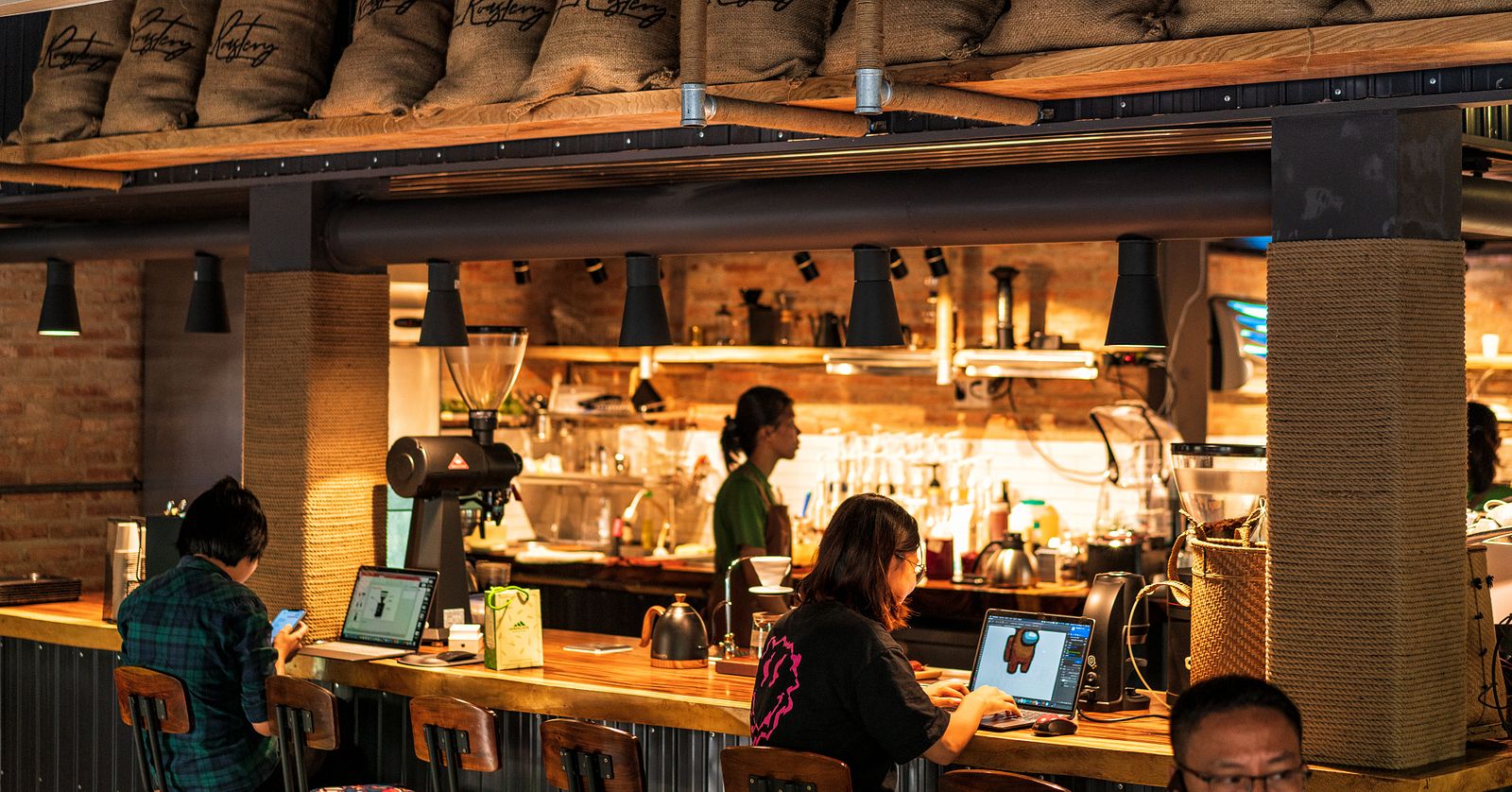Saigon is a cafe enthusiast’s paradise. A decades-old coffee culture fostered by previous generations is still alive and well, in addition to the latest global trends brought over by the younger generation of baristas. When it comes to interior styles and vibes, there’s a little something for everyone, from gritty industrial to spartan Japandi chic to Saigon’s very own southern modernist architecture.
At Saigoneer, we always have a soft spot for kiến trúc hiện đại Việt Nam, an idiosyncratic style of architecture that arose in the 1960s–1970s in southern Vietnam. During its heyday in the 1980s and 1990s, you didn’t have to search for it, because practically every building on local streets is modernist. Since the 2000s, as Vietnam absorbed more international influence, most new builds in the city have left behind modernist traits for more neutral or minimalist elements, so if you’re a fan of modernism, you’ll have to seek out historic structures, like the five landmarks we previously featured here.
There isn’t a standardized guideline on what makes something “modernist,” so most experts on southern modernist architecture use the term “vocabulary” to describe the elements most distinctive to this style. Much like words, home owners pick and choose modernist elements they like to express their individuality and personal taste, like brise-soleil, cantilever, pregolas, geometrical windows, and more.
To appreciate Saigon’s modernist marvels in the flesh, apart from public structures like hospitals and college campuses — which can be hard to get into — cafes might be your next best bets. The five names I’ve listed below have different degrees of architectural application, but might contain pieces of the bigger story of modernism in Saigon, all of which are worth exploring.
1. Cafe Linh
26A Phạm Ngọc Thạch, Xuân Hòa Ward, HCMC


In the quest to emulate a distinctive Saigon spatial experience, Cafe Linh opts for the most faithful and familiar recreation, down to little details like the motif on the floor tiles and shade of wood for the furniture. Young Vietnamese today would find the decoration and interior design instantly relatable, as most probably grew up or are even still living in a similarly furnished home.



One will notice right away how Cafe Linh pays homage to modernism from the moment they see the entrance: grey đá rửa on the facade, a wooden door with metallic frames, and two stencils of stylized flowers. Inside, the staircase, bookshelf and upper railings are probably my favorite elements showcasing modernism — regular patterns made up of irregular shapes, like angular spirals. Cafe Linh might not have set out to be a modernist coffee shop, but in its attempt to bring forth the coziness of 1990s Vietnamese homes, modernism is an indispensable ingredient.
2. Sipply Coffee
73 Đinh Công Tráng, Tân Định Ward, HCMC


If Cafe Linh sought to preserve what modernist architecture has been in previous eras, Sipply Coffee presents a vision of what modernism could be in the future. Based inside a refurbished modernist tube house, the cafe might look familiar from the outside, but upon setting foot inside, visitors will be greeted with an intermingling of modernist and contemporary features that are purposely meshed together in the space’s design.




At the back past the cashier counter, on a floor of vintage tiles, a white spiral staircase typically seen in old houses stands out as if a centerpiece, lit up by the natural lighting from the lightwell above. The tables and chairs, however, are sturdy and angular, marked by color blocks and shiny metallic surface, a far cry from the organic textures of modernism. Sipply Coffee is an interesting case study of how existing heritage houses can be made over to accommodate the aesthetic sensibilities of a new age.
3. 16 Grams
32 Thạch Thị Thanh, Tân Định Ward, HCMC



Much like Sipply, 16 Grams got its start from an old modernist shell, whose facade still retains much of the retro Saigon charm from the 1990s. A main palette of white and deep teal tiles, in addition to wood accents, evoke a cozy ambiance for patrons seeking a quiet place to catch up on some emails or a few chapters of a good book. Two elements particularly stand out: the floral pattern on the door frame and the colorful mosaic on the upper-floor veranda.



4. Patio Cafe
400/2 Lê Văn Sỹ, Nhiêu Lộc Ward, HCMC



True to its name, Patio Cafe’s most inviting and sun-drenched corner is the small patio on the side, obscured by swaying green vines and other foliage. Standing in the small courtyard and looking up, you’ll spot a very familiar railing design and a door-window combo that is essential to Saigon houses of the 2000s. A ribbon of brise-soleil lines the front beside a big glass panel bearing the cafe’s name. Patio Cafe pulls together different threads of architectural influences, but they coexist harmoniously instead of clashing. There are enough variations that each seating arrangement feels like something you can really melt in and make your own.

5. Starbucks Thorakao
241Bis Cách Mạng Tháng Tám, Bàn Cờ Ward, HCMC



Whether to include Starbucks Thorakao in this list was a decision that I toiled with for weeks in the making of this roundup, for a number of reasons. For as long as I’ve been living in Saigon, I could never resist looking in awe at this special building whenever I stop at the traffic light between Cách Mạng Tháng 8 and Điện Biên Phủ streets. The exterior is covered entirely in that recognizable shade of gray from đá rửa, but what makes it striking is a blend between retro and futuristic in its silhouette. On the second floor, a dome-shaped block juts out into the air, lined with tinted glass — I used to imagine that the entire structure is a spaceship, and the dome houses the cockpit steering the vessel on space exploration missions. It is commanding but not foreboding, distinctive yet perfectly in place in the modernist landscape of Saigon. It’s one of my favorite buildings in town, both to admire and as a shining example of an architecture style that’s uniquely our own.

Thorakao is a long-enduring local brand of cosmetics, perhaps most famous for its skincare products containing turmeric, and the Thorakao Building has been the company’s headquarters for decades. For a few years of those until now, the first floor is rented out to Starbucks, which has done literally nothing to amplify the modernist style of the building it occupies. The interior is woefully cookie-cutter, following the cafe chain’s generic design, so you’d be better off just appreciating the building from the intersection outside if you come here for southern modernist architecture. I have nothing amicable to say about its cafe tenant, but I would be remiss not to mention the Thorakao Building, because it is just that iconic.















